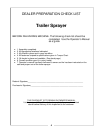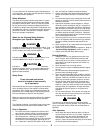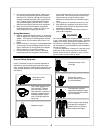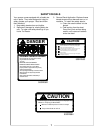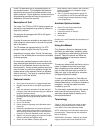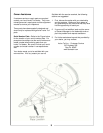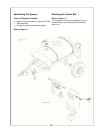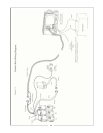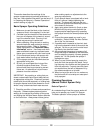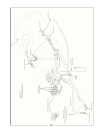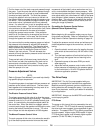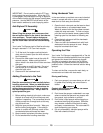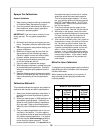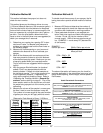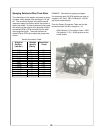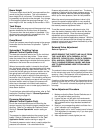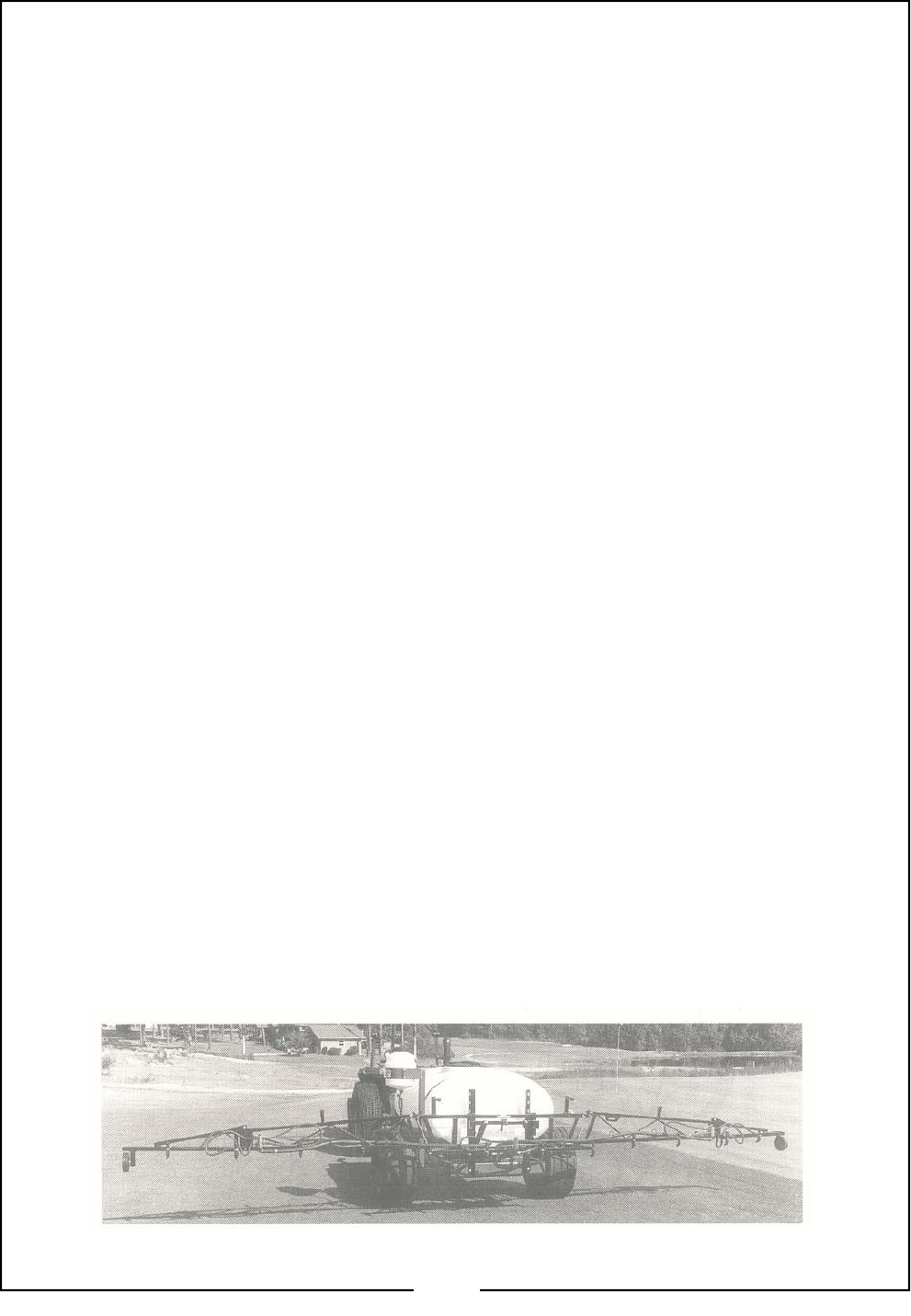
This section describes the workings of the
sprayer components and provides guidelines on
their use. More detailed information can be found
in Preparing the Sprayer in “General Operations”
section starting on page 21.
Basic Sprayer Operating Guidelines
1. Make sure to read the label on the chemical
compound that is to be applied; it is the law!
2. Consider how the chemical will be stored and
how you will dispose of the chemical, accord-
ing to the chemical label. Planning in ad-
vance may save much trouble later.
3. When calibrating, filling the tank or working
around chemicals, wear protective clothing
that covers the body. Refer to Personal
Safety Equipment in the “Important Safety
Information” section. Have soap and clean
water available to wash any exposed areas.
Never open a container with your bare hands.
4. Fill the hand wash tank on the sprayer with
fresh water before handling any chemicals.
5. Fill the sprayer and mix the chemicals at an
appropriate mixing site.
6. By law, you must repeat the rinsing of the
chemical container three times. The con-
tainer should then be punctured to prevent
future use. An alternative is to jet-rinse or
pressure rinse the container.
IMPORTANT: Any washing or mixing that pro-
duces contaminated liquid should take place at
an appropriate mixing site. Chemically contami-
nated liquid should be captured in a holding tank
for proper disposal and not be allowed to run off
where it may contaminate fresh water sources.
7. Check the condition of hoses and connections
frequently. Release system pressure before
working on the sprayer by shutting off the pump
and flipping the individual boom section switches
on the control box. Always wear rubber gloves
when making repairs or adjustments to the
spraying components.
8. If your sprayer boom is equipped with a level-
float pin, remove it before operating the
sprayer. The boom will float over the con-
tours of the ground more effectively and mini-
mize stress on the boom.
9. Apply spray when the wind is 5 mph or less.
Minimize drift by using nozzle tips with the
largest practical openings and by operating
the sprayer boom at the lowest practical pres-
sure.
10. Drive at the same speed you used in your
calibration. Refer to Miles Per Hour Calibra-
tion in the Tee Jet manual.
11. If possible work crosswise to the wind, start-
ing from the downwind side of the area to be
sprayed. Do this so you won’t ever be head-
ing directly into chemical fumes.
12. As you operate the sprayer, be aware of all
things that may be affected by the chemicals,
such as adjoining property, houses, gardens,
people, etc. Do not operate the sprayer if
damage can occur.
13. When you are finished spraying, empty the
tank and flush the sprayer with water, includ-
ing the pump, the nozzles and the bypass line
form the solenoids. Properly store the chemi-
cal emptied form the tank or dispose of it by
the recommendations on its label.
14. When turning at the end of a run, make sure
that the boom will not overlap on areas previ-
ously sprayed.
Plumbing Operations
(Manual Control System Only)
Refer to Figure 2-1
An understanding of how the sprayer works will
help you to operate your Locke Turf Sprayer.
The basic operation of the sprayer as follows.
12



